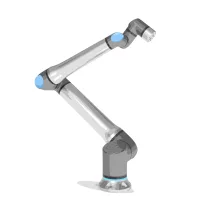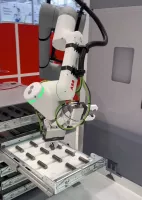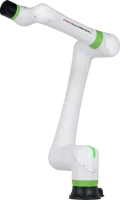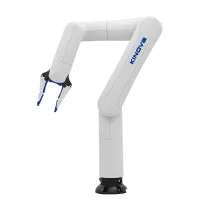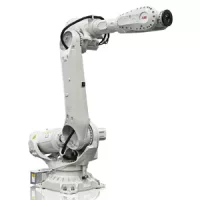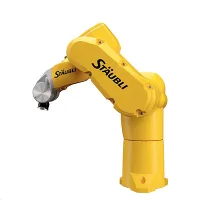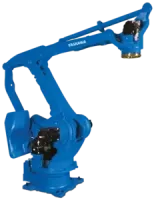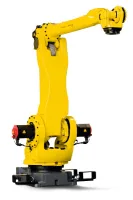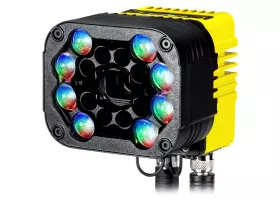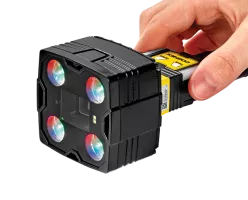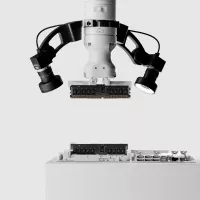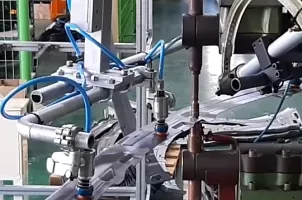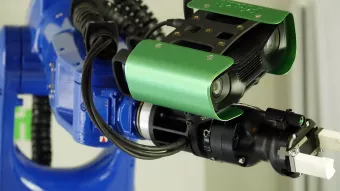THE POWER OF ASSEMBLY AUTOMATION
The role of robots and smart systems in revolutionizing assembly processes for unmatched precision and efficiency.
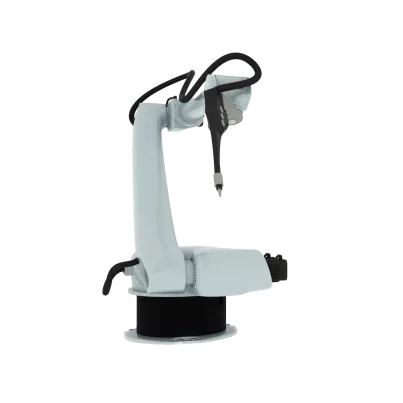
1. What is Assembly, in terms of Industrial Automation?
Industrial automation assembly is like using smart robots and machines to put things together in factories, making the whole process faster and more reliable. Imagine you have a big Lego set, but instead of you putting each piece together by hand, you have a robot that knows exactly where each piece goes. This is what happens in factories that make things like cars, electronics, and toys.
For you, this means products can be made quicker and without mistakes, because the robots and machines do the same job the same way every time. It's like having a team of super-efficient helpers that don't get tired or make errors. This not only makes things faster but also safer for people working there, as the risky jobs are done by machines.
Using industrial automation assembly, you can make more things in less time and be sure that every item is just right, helping your business grow and keeping customers happy with high-quality products.

2. What are the Main Types of Assembly Systems in Industrial Automation?
In industrial automation, there are mainly three types of assembly systems that help make things in factories. Let's break them down so you can understand how each one fits into making products:
Fixed Automation:
This is like a one-way road. Once set up, it does the same task over and over, perfect for making lots of the same thing. Imagine a conveyor belt that only makes one type of toy, moving from one step to the next without changing.
Programmable Automation:
Think of this as a customizable playlist. You can change what it does by reprogramming it, making it great for factories that need to switch between making different things at different times. It's like having a machine that can switch from making small cars to big trucks with some adjustments.
Flexible Automation:
This is the most adaptable. It can quickly switch between tasks without a lot of downtime, kind of like a smartphone that can run different apps depending on what you need. This is best when you need to make different things back to back.
Each type has its own place, depending on what you're making and how often you need to change things up.
Featured Assembly Cobots:
3. How Do Robotic Assembly Systems Work?
Robotic assembly systems are like high-tech helpers in factories. They use robots to put parts of products together. Here’s how they work for you:
Smart Robots:
These robots are programmed to do specific tasks, such as picking up a piece, putting it in the right place, or screwing parts together. They move quickly and accurately, doing the job the same way every time.
Seeing and Deciding:
Some robots have cameras and sensors that let them see what they’re doing. This helps them make sure every part fits perfectly. They can even adjust their actions if something isn’t quite right, just like how you might adjust a puzzle piece to make it fit.
Teamwork:
Robotic systems often work together with other machines and conveyors to move products along the assembly line. Each robot has its own job, and together, they assemble the whole product step by step.
For you, this means products are made faster and with fewer mistakes, making everything more efficient and reliable.
4. What are the Benefits of Using Industrial Automation in Assembly?
Using industrial automation in assembly brings a lot of perks to your production line. Here's how it benefits you:
Speeds Up Production: Automation makes everything faster. Robots and machines work quickly, meaning you can make more products in less time. It's like having a super-fast assembly line that never gets tired.
Improves Quality: Machines are precise and do the same job the same way every time. This means each product comes out looking just right, reducing the chances of mistakes that can happen when things are made by hand.
Reduces Costs: Although setting up automation might cost upfront, in the long run, it saves money. You spend less on labor, and because the machines are so accurate, you waste fewer materials on errors.
Enhances Safety: Robots can do dangerous jobs instead of people, reducing the risk of accidents in the workplace. It's like having a robot superhero that takes care of the risky stuff so people don't have to.
5. What Challenges are Comes with Implementing Assembly Automation?
Implementing assembly automation in your factory can be a game-changer, but it's not without its hurdles. Here's what you might face:
Costs Up Front:
Think of it as paying a lot now to save more later. Setting up robots and automated systems costs a pretty penny. You're not just buying machines; you're investing in a future where things run smoother and faster.
Fitting It In:
Sometimes, the new automation technology doesn't easily work with what you already have. Making them work together can be tricky and might need some clever thinking.
Finding the Right People:
Just like you'd want a skilled pilot for a plane, you need people who know how to run these high-tech systems. Finding folks with the right skills can be tough, and you might need to train your current team.
Jobs Changing:
There's worry about robots taking jobs. While automation does change the types of jobs available, it also creates new opportunities for people to work in tech-savvy roles, focusing more on overseeing the machinery than doing the manual work.
Navigating these challenges is about planning, investing in training, and finding the balance between machines and humans in your workspace.
6. How Can Assembly Boost Efficiency?
Boosting efficiency with assembly automation means making the most out of your production processes, so you can create more products faster, with less waste and fewer errors. Here's how assembly automation can help you achieve this:
Speeds Up Production:
Automation can work non-stop, much faster than humans, and doesn't need breaks. This means you can make products quicker, meeting demand without delays.
Reduces Errors:
Machines are precise. They do exactly what they're programmed to do every time, which means fewer mistakes. Less waste and fewer do-overs save you time and materials.
Improves Quality:
Consistent actions by machines ensure every product is built to the same high standard. High quality means happy customers and fewer returns or complaints.
Saves Money in the Long Run:
Although it might be costly at first to set up, over time, automation saves you money. It cuts down on labor costs and reduces waste, making your operations more cost-effective.
Adapts Easily:
Modern automation systems can be reprogrammed for different tasks or products, making your production line more flexible and able to respond to changing market demands.
By leveraging assembly automation, you're not just making things faster; you're making them better and more efficiently, positioning your business for success in a competitive market.
7. What are Some Examples of Industries That Heavily Rely on Assembly Automation?
Assembly automation is a big deal in many industries, helping to make products quickly, accurately, and safely. Here are a few places where it really shines:
Automotive:
If you've ever seen how cars are made, you know it's like a ballet of robots. From welding car frames to installing engines, automation helps make sure every car is built to perfection.
Electronics:
Think about your smartphone or laptop. Assembly automation puts together those tiny, intricate parts with precision. This way, every device works right out of the box.
Consumer Goods:
Items like toys, appliances, and clothes also benefit from automation. It helps produce large quantities fast, keeping your favorite products in stock.
Pharmaceuticals:
Safety is key here. Automation ensures medicines and health products are put together in clean, controlled environments, reducing the risk of contamination.
In these industries, automation is not just about speed; it's about making things better and safer for everyone.
8. What is the Role of Machine Vision in Assembly Automation?
Machine vision in assembly automation is like giving robots eyes. This technology allows machines to see what they're doing, just like you would when putting together a puzzle. Here's how it helps you in the factory:
Seeing the Details:
Machine vision can check parts and products as they come down the line, making sure everything looks right. It's like having a super-fast, never-tired inspector that makes sure only the good stuff passes through.
Guiding Robots:
With machine vision, robots can pick up, place, and assemble parts precisely. Imagine a robot that can perfectly place a tiny screw every time, thanks to its "eyes" guiding the way.
Adapting on the Go:
If something changes, like a new part design, machine vision helps robots adapt without you having to manually reprogram them. They just "see" the difference and keep working smoothly
Featured Assembly 2D Vision Systems:
9. How Does Assembly Automation Handle Complex Products?
Smart Robots at Work:
Assembly automation uses really smart robots equipped with AI. These robots are like skilled workers who never take a break. They can do lots of tasks very precisely, whether it's placing tiny parts together or assembling something complex. Imagine having a helper who can see every detail and adjust their movements to get things just right.
Seeing and Feeling:
These robots have special abilities, like 3D vision and sensors that let them feel. This means they can look at what they're doing and change how they move to fit the task—kind of like when you adjust your grip if something you're holding is delicate.
Your Benefit:
What does this mean for you? Even if what you're making is complicated, these robots can handle it, making sure every piece is perfect. It's like having an expert craftsman on your team, ready to tackle any challenge. This tech makes sure your products are made quickly, accurately, and just how you want them, every single time
Featured Assembly 3D Vision Systems:
10. Can Assembly Automation Be Integrated With Existing Manual Processes?
Friendly Robots:
Yes, you can mix automation with the way you already do things. This is where cobots come into play. They're designed to work right next to people. Think of them as your robot teammates. They can do the heavy lifting or repetitive jobs, which lets you and your team focus on the more detailed or important work.
Safety First:
These cobots are super safe to work around. They're built to be around people, so you don't have to worry about them. They can sense where humans are and adjust their actions to keep everyone safe.
Boosting Your Work:
What's really cool is how this teamwork approach can make everything more efficient. You get the best of both worlds: robots handle the routine stuff, and humans take care of tasks that need a personal touch. This means you can make more things, make them faster, and make sure they're just right, all while keeping the personal quality that makes your products special.
Need help or have questions? Contact us or book a meeting with Sven, our expert, for personalized support.

